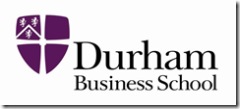Colin Speaks: Education and support (2 of 2)
Enabling continuous improvement in knowledge worker productivity
 We are in the middle of exploring how we can design educational and support services in the organisation to improve knowledge worker productivity.
We are in the middle of exploring how we can design educational and support services in the organisation to improve knowledge worker productivity.
One response is of course to make more use of technology to help us. This is a natural area for “eLearning” as there are significant opportunities for breaking the learning down into small chunks and enabling ongoing and ‘just in time learning’. Of course many vendors and organisations have made significant investments in this area and it’s a great part of a wider solution. Just as one example, Darren did some sessions on OneNote 2007 some time ago in this blog and they were a great way to start to hear about, and importantly to see, some of the new features in action. As we take this approach a real ‘win: win’ is to use the technologies we use everyday to provide this ‘eLearning’ environment.
I’ve been going through this learning process myself in the last few days. I’m going to really emphasise ‘technology enabled learning’ in 2007/8 and I’m starting to get to grips with podcasting. I spent a couple of hours this week playing around with PowerPoint and a microphone and webcam starting to see what worked and what didn’t and how I could quickly create a short audio-visual presentation. Basic stuff I know. I’ve known that the functionality has been there for years, but I’ve never tried using it before. I know one other person in the School has used it – but he was on holiday. I’m fairly sure our IT team have not used this and I certainly didn’t want to do a School-wide email to try and find out if anyone else had more experience than me. Anyway – it was fun and I did make some good progress. You might see some evidence in later entries in the blog!
Outlining a new design
So what might education and support services to enhance knowledge worker productivity look like? I’ll outline a number of elements of a possible solution.
Enhancing existing, informal support arrangements within business units
Education in the use of technology is most effective if closely related to the work context and the effective exploitation of technology is significantly influenced by support from the users peer group. My first area of focus is to build on and enhance the effectiveness of the existing ad hoc and informal arrangements. Again I’m getting support from Drucker: knowledge work requires continuous learning and continuous teaching by the knowledge worker.
So, areas to consider include:
· Formal activities. Education for new workers or on the introduction of new technology should be related to the work context as should help and guidance material. The evolution of portal and eLearning technologies provide a number of opportunities, for example training and other guidance and support resources can be linked to directly from guidance / documentation on business processes. There is also the opportunity to make this user owned.
· Peer group and community support. It is important to recognise, encourage and facilitate peer group and community support. Specific steps could include reward and recognition for local experts and recognising these existing informal roles in more formal team role descriptions and performance measures. Provide enhanced training and support for these local experts (e.g. Microsoft Office User Specialist and the new Microsoft Business Certification). Also establish and facilitate a community (or communities) that can bring these people together and enable them to learn from each other.
· Local / informal / community support arrangements should be encouraged by the ‘formal’ IT support teams and arrangements. This is key area where end user innovation and skills need to be encouraged.
The support arrangements should shift from a ‘reactive’ to a ‘proactive’ approach and exploit a wide variety of techniques including ‘brown bags’ and ‘tips of the day’ raising awareness of what is possible. They need to address a variety of areas for example:
· How best to use the basic functionality of the software.
· Good practices: for example around the use of email and instant messaging to communicate effectively and maintain trust and good relationships and avoid ‘information overload’.
· Reuse for example of templates improving both efficiency and perceived quality.
· Development, management and reuse of local solutions exploiting Office and other infrastructure products.
The Knowledge Worker Support Centre
The role of support arrangements provided by the IT function is also critical. Organisations have taken many approaches to providing users of desktop technologies with support. Many went through a period of investment in an Information Centre which was heavily involved in support and also in developing systems for end users. More recently cost cutting within IT has found support teams an easy target and organisations have restricted the scope of support to providing a technical service to ensure that PCs continue to function and handling specific technical problems.
A service is required to provide support for knowledge workers that addresses the use of technology to increase the effectiveness of end user performance. It should not be restricted to purely technical issues.
A key decision for an IT function is what balance they should strike between providing the service and facilitating the local services and arrangements within the business areas. The IT support arrangements need to work closely with the support arrangements in business area already outlined and in particular need to facilitate the more informal arrangements.
Overall I envisage a 3 tier support model:
· Tier 1 support is provided by the local informal support arrangements. This may also include more extended support through the local communities.
· Tier 2 support is provided by the central knowledge worker support team(s). This service using email, telephone and web aims to help the users exploit the available technology to improve their performance and productivity. It should start from the perspective of “how do I do task x?” not just how a specific product works.
· Tier 3 support addresses more advanced technical issues and also services to support end user systems needs, for example a requirement for a sophisticated spreadsheet.
The opportunities for shared learning, good practices and reusable resources are significant. This certainly seems a key opportunity for the IT function; through brown bag sessions; show cases; on-line forums etc
Making it happen
A great thing about this is that it is not ‘all or nothing’. It is an ideal scenario for making incremental improvements and learning as you go. Who is going to be the champion and visionary in your organisation?
Let me know what you are doing already and how you get on with improvements; get in touch if you want to talk about it – through the blog or directly.
Next week we’ll stick with this theme and look at a few specific examples including what we’re starting to do here.
Senior Teaching Fellow: Information Systems and Business Transformation
Chief Information Officer
Durham Business School, University of Durham
Comments
- Anonymous
August 30, 2007
PingBack from http://msdnrss.thecoderblogs.com/2007/08/30/
